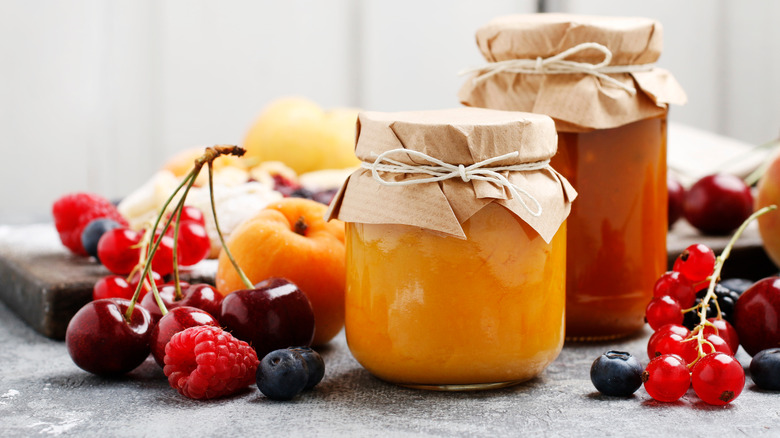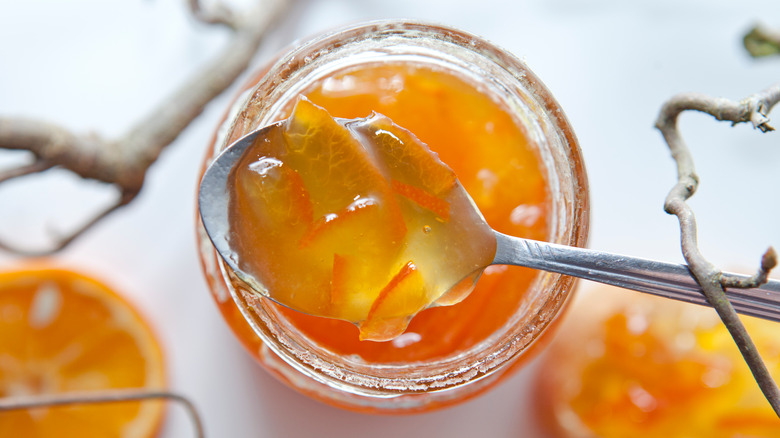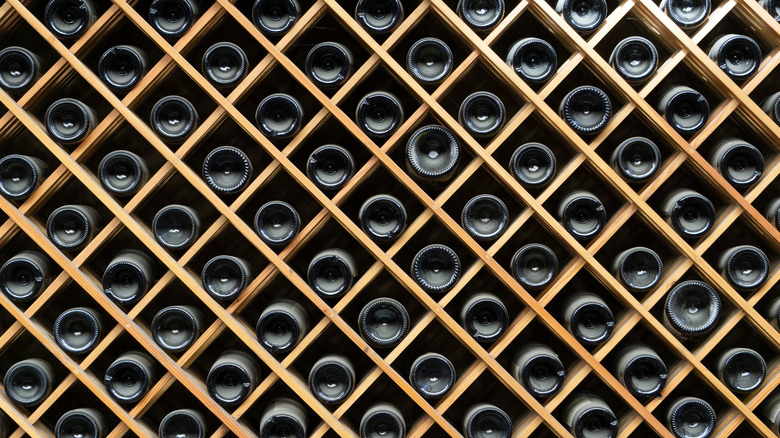The Clever Tactic Behind The Dents On Jam Jars
Having jars of jellies, jams, and preserves is one of the most classic and staple items you can have in your kitchen. Along with making iconic peanut butter and jelly sandwiches, various flavors of jams come in handy when it comes to breakfast foods, making pastries, topped on crackers and cream cheese, and more.
According to Report Linker, jams, jellies, and preserves amounted to $1.5 million in market value throughout North America in 2021 alone. Now, that's a lot of jelly to be had! Whether you buy your jams and jellies ready-to-eat and use from your local store or preserve your own jam or jelly at home through the use of sugar, pectin, and sterilized jars, there is usually one thing in common: the little indent at the bottom of the jar.
Maybe you've noticed it, maybe you haven't. But more times than not, it's there. Have you ever wondered what that little feature is doing there? Does it actually serve a purpose? Let's find out.
The dent has a purpose
Believe it or not, the dent at the bottom of most of your jelly jars does have a purpose. In fact, according to Scoop Whoop, the dent has many different purposes to make your life easier and help keep the life of the jelly intact. First, the dent makes it easier for you to literally hold the jar in your hand. Second, the dent at the bottom of the jar gives the overall structure more strength. Because jellies, jams, and preserves use high pressure to keep it fresh and edible for long periods of time, the dent prevents the jar from "bursting" from the high pressure. Third, any floating sediment in the jar of jelly or jam will settle around the edges of the dent, preventing any unwanted "floaties" from getting mixed in with the rest of the delicious jelly.
According to Clubs of America, though, the dent seems unnecessary for jelly, jam, and preserve jars. They claim that the dent takes up space inside jars, meaning less of the substance is in the actual jar. This can trick customers into thinking they are getting more than what they actually are, since the dent creates an optimal illusion of more at the bottom of the jar.
Wine bottles have them too
The dent in the bottom of jars isn't exclusive to jellies and jams only. Wine bottles also have dents on the bottom of bottles for even more strategic purposes. Along with all the above-mentioned reasons, the dents or "punts" in wine bottles is to ensure the bottle stands up straight (via Wine Spectator). Additionally, the dent at the bottom of wine bottles also makes wine drinkers see the bottle as being bigger than it actually is (via Scoop Whoop). The dent also increases the surface area of the bottom of the bottle, allowing wine bottles to stay in ice and cool down easier.
Additionally, when you look at how wine bottles are stored (at least properly), you'll see that the head of the bottle goes in first, exposing the dented bottom out. This helps wine bottles from breaking during transportation and shipping as they make their way around the world to dining room tables.


